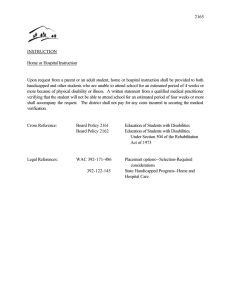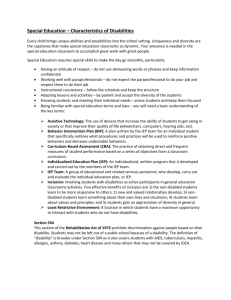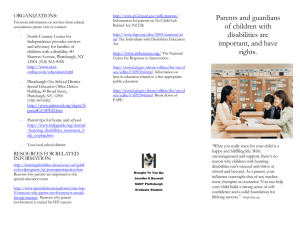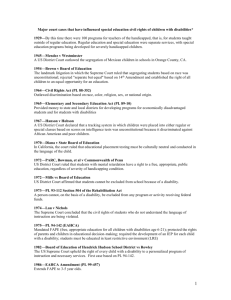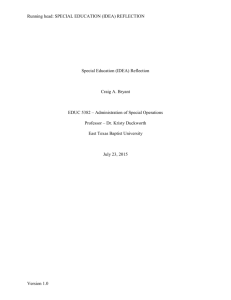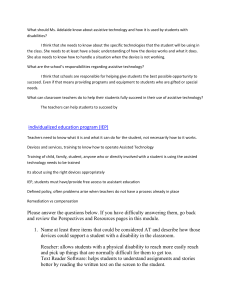Session 1 organizer
advertisement
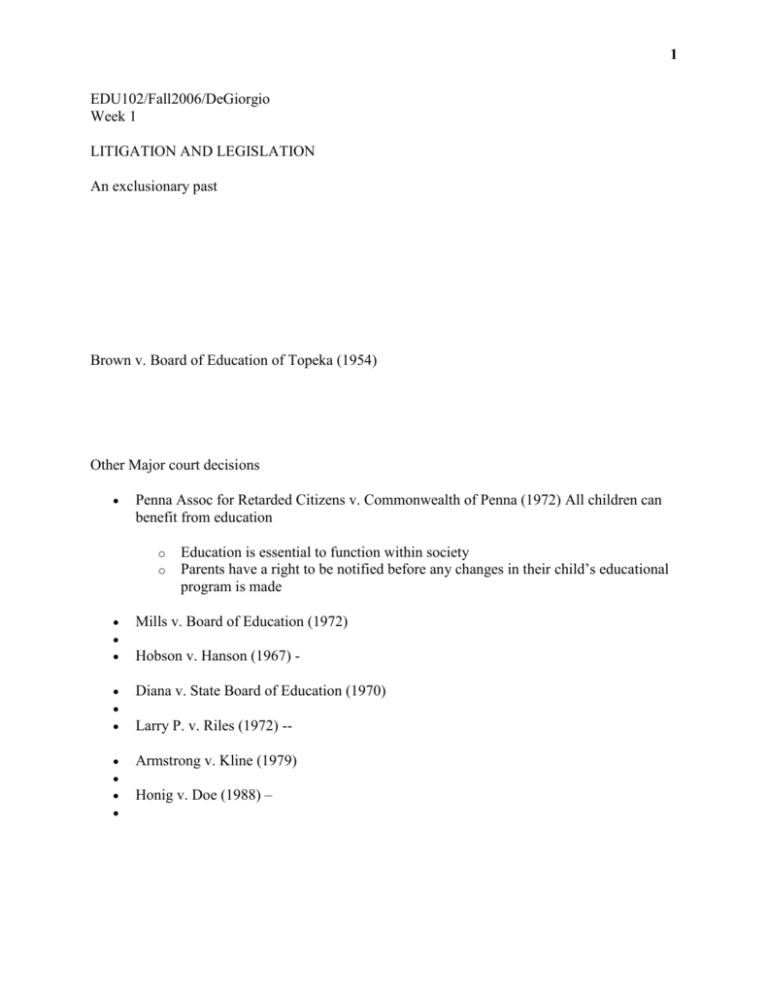
1 EDU102/Fall2006/DeGiorgio Week 1 LITIGATION AND LEGISLATION An exclusionary past Brown v. Board of Education of Topeka (1954) Other Major court decisions Penna Assoc for Retarded Citizens v. Commonwealth of Penna (1972) All children can benefit from education o o Education is essential to function within society Parents have a right to be notified before any changes in their child’s educational program is made Mills v. Board of Education (1972) Diana v. State Board of Education (1970) Armstrong v. Kline (1979) Hobson v. Hanson (1967) - Larry P. v. Riles (1972) -- Honig v. Doe (1988) – 2 "Expulsion" Major federal legislation I. Public Law 94-142: The Education for All Handicapped Children Act of 1975 The purpose of IDEA is: Six major principles in Public Law 94-142 that still remain in IDEA Zero Reject and child find: Nondiscriminatory Identification and Evaluation or testing: Free, Appropriate Public Education (FAPE). Appropriate" is a critical term in FAPE. The education that a child with disabilities receives needs to address (i.e., be appropriate for) his or her special educational needs. 3 Schools must develop and implement and individualized education program (IEP) for each student with a disability. The IEP must be individually designed to meet the child’s unique needs. The Individualized Education Program (IEP) must have the following six components: Least Restrictive Environment – Procedural due process – Parent and Student Participation and Shared Decision Making -- II. The Individuals with Disabilities Education Act of 1990 (IDEA) was enacted in 1991 as a result of Public Law 101-476: Education of the Handicapped Act Amendments of 1990. IDEA pertains to public schools only, is a funding act, and involves youth aged 3 to 21. A major change brought about by this legislation was renaming the EHA to "Individuals with Disabilities Education Act." This change in terminology from "handicapped children" to "individuals with disabilities" shifted the emphasis to the person rather than to the disability. 4 Other changes in IDEA included: Addition of two new categories of disabilities: (a) Autism -- developmental disability significantly affecting verbal and nonverbal communication and social interaction, generally evident before age 3, and (b) Traumatic Brain Injury -- an acquired injury to the brain caused by an external physical force, resulting in total or partial functional disability or psychological or social impairment. Addition of transition services as a requirement on students IEPs beginning no later than age 16 (and in some cases at age 14 or younger). Transition services are defined as a coordinated set of activities for a student within an outcome-oriented process, which promotes movement from school to post school activities, including post-secondary education, vocational training, integrated employment, continuing and adult education, adult’s services, independent living, or community participation. Addition of definitions of assistive technology device and assistive technology service. Rehabilitation counseling and social work services were added to the definition of related services. III. The IDEA Amendments of 1997, Public Law 105-17 -- IDEA was again amended and reauthorized in 1997. These amendments were meant to strengthen and improve IDEA to better educate children with disabilities and enable them to achieve a quality education. The Amendments sought to achieve this quality education by: IV. Section 504 of the Vocational Rehabilitation Act of 1973 (Civil Rights "stick law") V. Americans with Disabilities Act (ADA) of 1990

